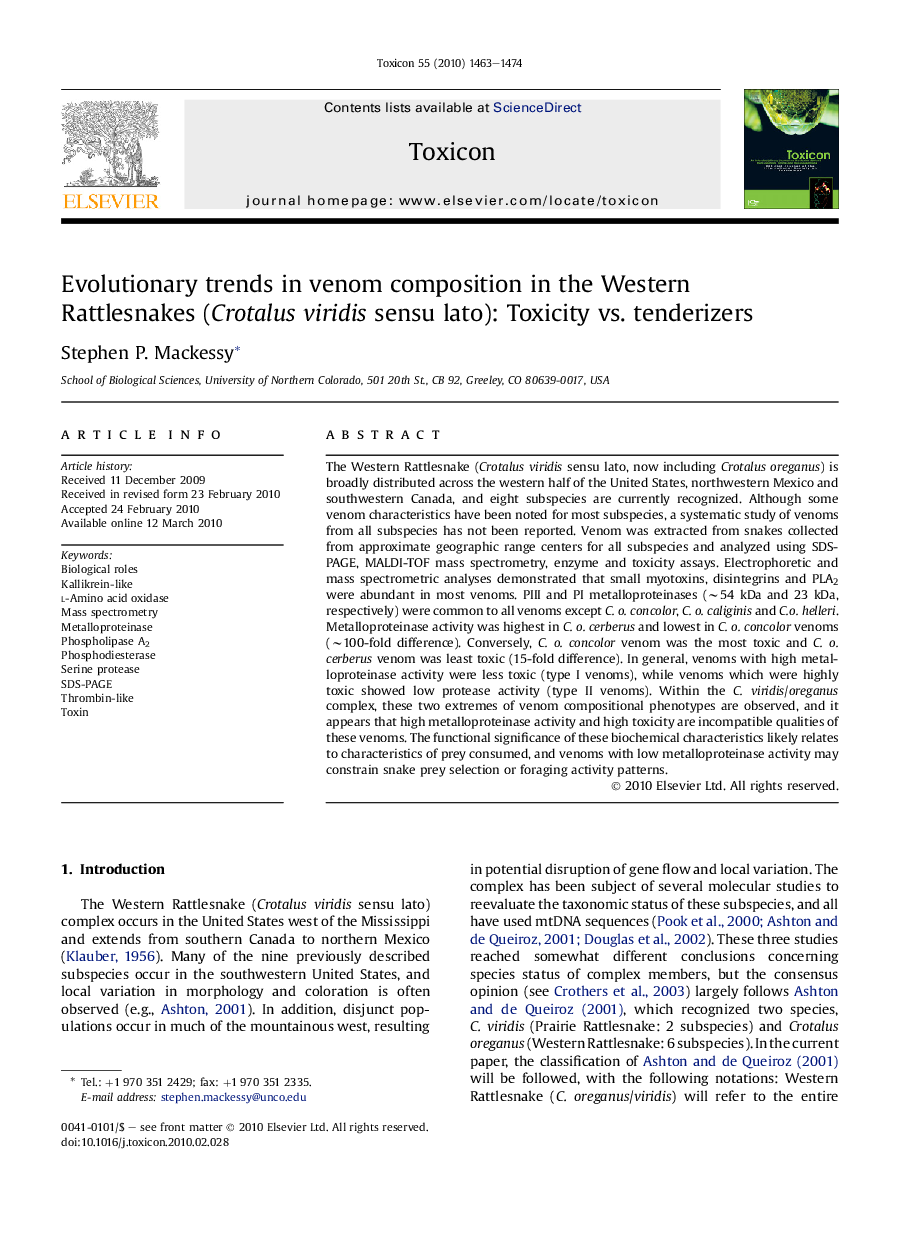| کد مقاله | کد نشریه | سال انتشار | مقاله انگلیسی | نسخه تمام متن |
|---|---|---|---|---|
| 2065020 | 1076901 | 2010 | 12 صفحه PDF | دانلود رایگان |

The Western Rattlesnake (Crotalus viridis sensu lato, now including Crotalus oreganus) is broadly distributed across the western half of the United States, northwestern Mexico and southwestern Canada, and eight subspecies are currently recognized. Although some venom characteristics have been noted for most subspecies, a systematic study of venoms from all subspecies has not been reported. Venom was extracted from snakes collected from approximate geographic range centers for all subspecies and analyzed using SDS-PAGE, MALDI-TOF mass spectrometry, enzyme and toxicity assays. Electrophoretic and mass spectrometric analyses demonstrated that small myotoxins, disintegrins and PLA2 were abundant in most venoms. PIII and PI metalloproteinases (∼54 kDa and 23 kDa, respectively) were common to all venoms except C. o. concolor, C. o. caliginis and C.o. helleri. Metalloproteinase activity was highest in C. o. cerberus and lowest in C. o. concolor venoms (∼100-fold difference). Conversely, C. o. concolor venom was the most toxic and C. o. cerberus venom was least toxic (15-fold difference). In general, venoms with high metalloproteinase activity were less toxic (type I venoms), while venoms which were highly toxic showed low protease activity (type II venoms). Within the C. viridis/oreganus complex, these two extremes of venom compositional phenotypes are observed, and it appears that high metalloproteinase activity and high toxicity are incompatible qualities of these venoms. The functional significance of these biochemical characteristics likely relates to characteristics of prey consumed, and venoms with low metalloproteinase activity may constrain snake prey selection or foraging activity patterns.
Journal: Toxicon - Volume 55, Issue 8, July 2010, Pages 1463–1474